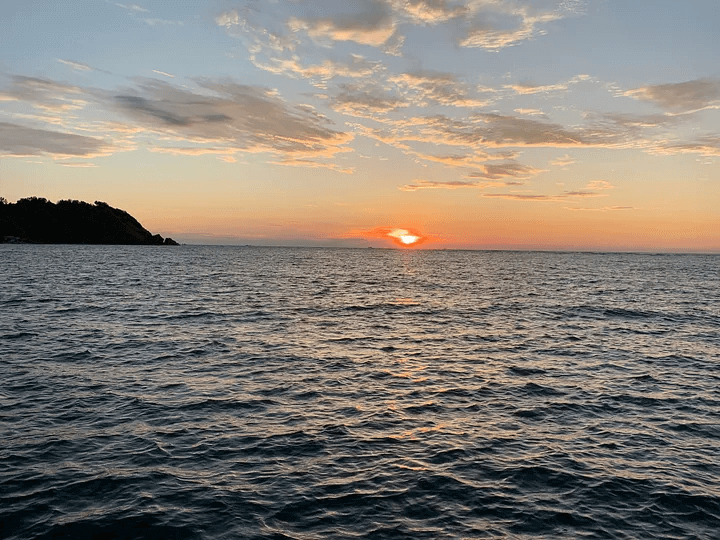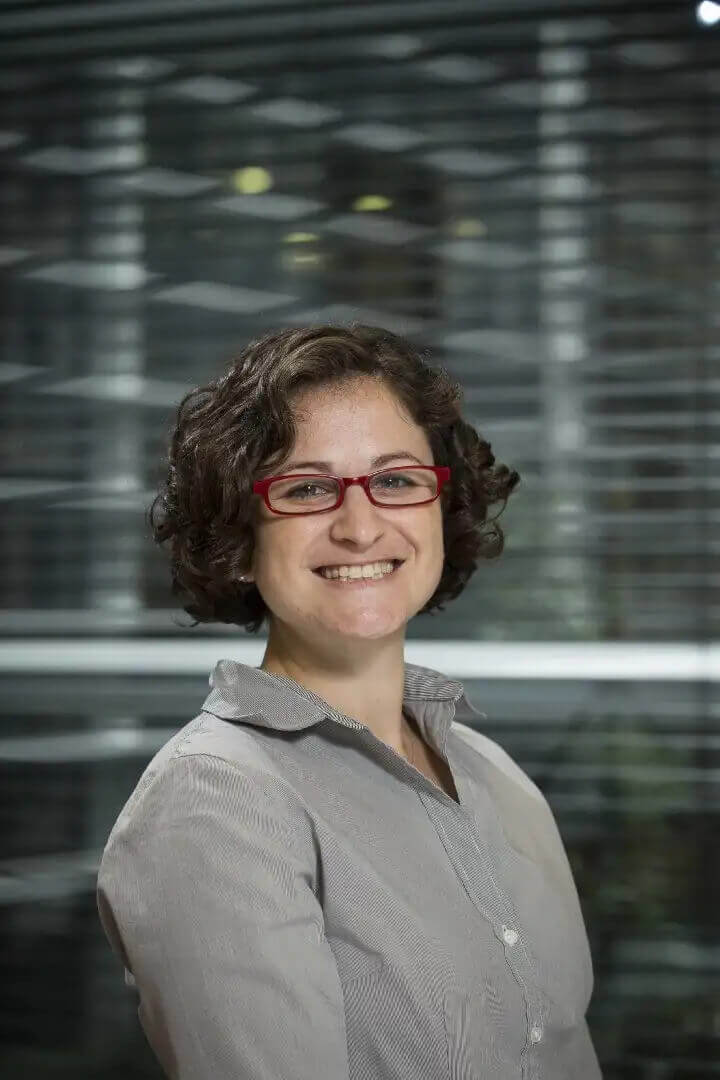There is still a window of opportunity. Thoughtful actions are needed.
About this series: This is the first of a three article series where we distil the voluminous IPCC special reports on Land and Ocean into specific, action-oriented and jargon-free messages
Small Island Developing Countries (SIDSs) face serious risks from climate change. The IPCC Special Report on Land and Ocean, published as recently as 2020 and 2019 respectively, give two other critical pieces of information. On the negative side, the grave impacts of climate change are being worsened by other adverse human impacts. On the positive side, the SIDSs have options at hand and about two decades to experiment and understand the best way to respond. Even as big countries and corporations haggle over emission cuts, SIDS communities need to do what they need to do. Quickly and calmly.
Clear indications
The ocean system is absorbing heat and carbon dioxide at increasing rates. Between 1969 to 1993, the rate of heat uptake was about 3.22 ZJ per year. That rate has increased to about 6.28 ZJ per year in the period 1993 to 2017. (One ZJ is 10 21 Joules, a standard unit of energy). As the ocean waters absorb carbon dioxide, carbonic acid is produced. Between 1991–2011, the average pH value of oceans decreased by 0.018 units per decade (a lower value indicates an increase in acidity). Oxygen does not dissolve well in warm water, so oxygen levels have declined by 0.5–3.3% between 1970 and 2010 at depths below 1000 meters.
The warming leads to expansion which is one reason that the sea level is rising. The other reason is the melting of ice. Sea levels are rising at an accelerating speed. Observations indicate that the sea level rise was about 1.38 mm per year between 1901 and 1990, which increased to 3.16 mm per year between 1993 and 2015. By 2050, the rise could be in the range of 4 mm per year. The sea level rise is not uniform and the relative sea level rise in some areas is more pronounced because the land levels in the deltas near the coast are falling. Upstream dams and sand mining has reduced the flow of sediments. This is slowing down the formation of the deltas. The spaces within the delta sediments are also being compacted because of groundwater withdrawal and this means that they fall further. The Nadi town in Fiji is an example. The sea level rise was about 4 mm per year between 1992 to 2018, a period in which there were about 25 major floods. The global sea level rise was not the only reason for the floods: the mangrove forests had been cut down and the rivers were filled with sediments owing to deforestation.
Besides warming, acidity, and lower oxygen content in the oceans there is the higher frequency and intensity of extreme weather events. The force of high intensity cyclones has increased in recent times. Cyclones such as Pam (2015), Matthew and Winston (both 2016 have caused significant damage.
Grave Implications
There will be two levels of impact: first on ecosystems and then on human society.
The multiple stressors acting together will create enormous pressures on ecosystems such as beaches, coral reefs, and mangroves. Vegetation on sandy beaches is likely to change to a sparser form after an extreme climate event. Biodiversity will be threatened and will likely shift towards species that are adapted for the warmer and acidic conditions. The coral and mangrove ecosystems in tropical small islands are exposed to the highest risk. They are exposed to changing conditions and with infrastructure coming up close to the shoreline they are subject to “coastal squeeze”, unable to grow inland. The changes in these ecosystems may not be gradual, as well. There can be sudden phase shifts leading to abrupt and irreversible changes.
Some coral reefs — as well as other species — will adapt to warmer and acidic conditions. Islands themselves can adapt to increasing sea levels. Tuvalu, in the Pacific, was a prime candidate to disappear. It has not and the island has increased in area by 73.5 hectares. Not just Tuvalu, a study of the land area of 709 atoll islands, indicate that islands have the capacity to maintain their land area by naturally adjusting to sea level rise. This ability can be impaired if the adverse conditions persist.
Human societies will be at higher exposure from extreme climate events. The loss of the ecosystem protection will mean that habitats and infrastructure will be increasingly exposed to nature’s fury. Coral reefs and mangroves protect coasts by reducing wave energy and heights by as much as 40% to 70%. Urban islands such as — Fongafale (in Tuvalu), South Tarawa (Kiribati), Male’ (Maldives) — which house critical infrastructure such as airports and harbours will be at particular risk. They have very low elevation often less than 4 metres and land reclamation has led to mangroves being cleared and coral reefs being degraded.
Availability of fresh water for drinking water and agriculture will be reduced as sea water seeps into the coastal aquifers, surface waters and soils. Flooding will lead to salinization and ultimately soil degradation. Food security issues, arising from the drop in agricultural productivity will be made worse by the reduction in catch potential of fisheries and marine aquaculture. There are likely to be heath related impacts as well. Frequent flooding will increase the frequency of water borne diseases. Mercury compounds are soluble in acidic and warm waters. Some organisms can consume these compounds and then other organisms can consume these organisms in turn thus spreading them across the food chain.
Getting worse
Marine heat waves are periods of high temperatures in the ocean that affect large geographical areas, extend deep into the ocean and persist for days or months. Multiple occurrences of these events have been reported in the last decade and is they are expected to increase in frequency, geographical spread, duration and intensity. The high ocean temperatures between 2014 and 2017 affected SIDSs from the Caribbean Sea, Indian Ocean and Pacific Islands. The heat stress during this event caused bleaching 75% of global reefs and mortality at 30%. The effects were not just felt at sea: it caused heavy rain or drought events and loss of aquaculture.
Scary as this sounds, the world is still not over a “tipping point” of no-return yet. Deep waters formed in the northern North Atlantic Ocean causes the Atlantic Meridional Overturning Circulation which carries large amounts of heat northward across the two hemispheres. One possible tipping point would be the its collapse. There is a definite weakening of this circulation system, which is being made worse by the accelerated melting of the Greenland Ice Sheet. But most climate models (the IPCC report on Oceans indicated one expectation) do not predict its collapse in this century.
The need for adaptation
This gives some time to adapt. Indeed, in terms of impact, the “scenario divergence” between very rapid reduction of global emissions (the IPCC nomenclature calls it RCP 2.6) versus doing nothing (this trajectory is called IPCC 8.5) is likely to happen only by 2040 for many SIDSs. The general outlook for the next two decades is already known, and preparations need to be made.
The fact that many of the impacts come from damage human beings do to the local environment provide a good starting point. Pollution needs to be drastically reduced. They lead to harmful algal bloom among the coral reefs and the smothering of coral polyps, the tiny soft-bodied organisms who are the starting point of reefs. Pollution also leads to the death of fish . Business models, which overemphasise coastal development, deforestation and over exploitation of marine resources will have to be stopped immediately.
Aside from the extreme option of retreating and migration of populations, SIDSs have a range of adaptation options. It is clear that they have to accommodate climate change. Early Warning Systems will have to be installed and disaster management systems will have to be set up. Insurance schemes should be made available to financially excluded populations to cushion them when sudden events occur. New schemes can be designed to meet the risks of slow onset events.
Agriculture is a major part of the economic activity in many SIDSs More than 60% of land area in the Marshall Islands and Tuvalu and more than 40% in Kiribati and Tonga is used for cultivation. To prevent a food and livelihood crisis, agricultural practices have to change. Crop species would have to be salt tolerant. Some farmers would have to switch from agriculture to aquaculture. Yields will have to increase sustainably. To do this farmers will have to adopt agro-economic approaches and grow a diverse range of traditional local crops and maintain soil organic matter. They will also have to become climate smart by substituting fossil based fuels to renewable energy and using resources, particularly water, efficiently.
Conservation and restoration of coastal ecosystems is key to effective adaptation. Ecosystem based approaches protect the coastline by providing natural barriers to erosion, waves and storms. They protect vulnerable communities by improving water quality, enhancing productivity of coastal fisheries and providing raw material for food, medicine and construction. Ecosystems also store carbon so they provide climate mitigation benefits as well.
The IPCC calls ecosystem based approaches “low regret options.” It is hard, however, to quantify the size of the protection they offer or the amount of carbon they can store. The exact benefits depend on the situation: on the choice of species and restoration techniques, the local landscape and its patterns of temperature, salinity, waves, tides and storms. Mangrove restoration projects, for example, can fail where certain species are planted in the wrong place.
Ecosystem based approaches require an inclusive approach and the harnessing of local indigenous knowledge. It also needs to incorporate modern approaches such as artificial reef restoration. SIDSs must take the time they have to experiment and learn what approaches work. Sufficient time must also be given to the process of planting and growing coral reefs, mangroves, sea marshes and seagrass meadows so that they reach the sufficient heights and density.
In many places, planners may not give themselves this time. They might go for known solutions such as building barriers such as sea walls or raising the land levels. If built to the sufficiently high levels, they can effectively protect against the rising sea levels of this century. But they could be expensive to build and maintain against erosion. These structures would disrupt natural mechanisms such as deltas building land and destroy ecosystems. They could also destroy indigenous ways of life. The IPCC report calls them “rather short-term.” However, they are still likely to be popular as they would be a way to show concrete solutions. They would create land and building space which would lead to revenue. Therein lies the risk: of being locked in a pathway that forces the creating higher and higher defences — as other options are ruled out — with ever increasing consequences of failure.
To prevent the situation from spiralling out of control, SIDS communities will have to come together to define new paths of sustainable development. In some places, building infrastructure would be needed. But that needs to be accompanied by vigorous restoration of natural ecosystems and keeping the needs of vulnerable communities in mind. This requires time. The more the delay, the more would be the panic and greater would be the temptation to take actions quickly . The sad truth is that many of these quick solutions may not help in the long run. SIDS communities have limited time but they must take every minute of what they have to find a path out. Restoring degraded landscapes and stopping further destruction is the place to start and embark on a path of adaptation that puts communities and ecosystems at the core of a new path of development.
This article is based on the IPCC Special Reports on Land & Ocean and is aimed at providing to actionable insights to the business and community organizations. This is the first of a three part series. The second is on what should be done to avoid food security crisis in Africa. The third is on what ASEAN nations should be doing.




